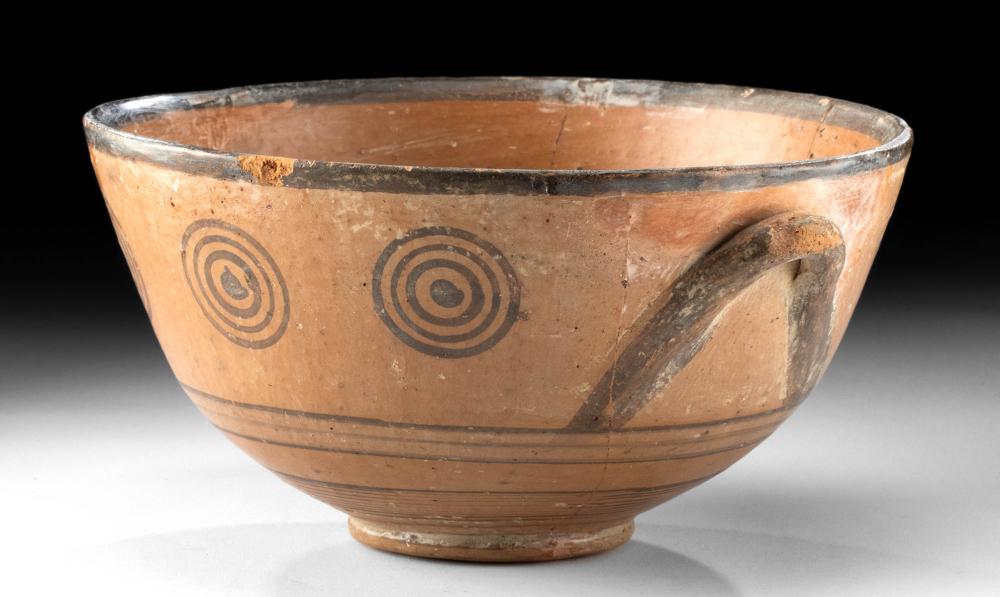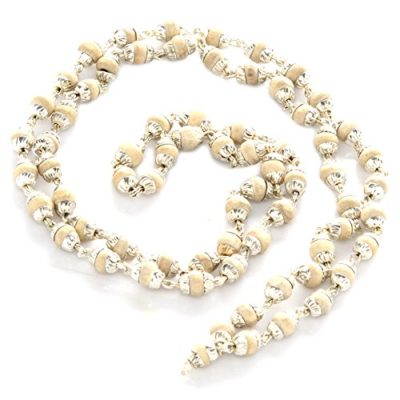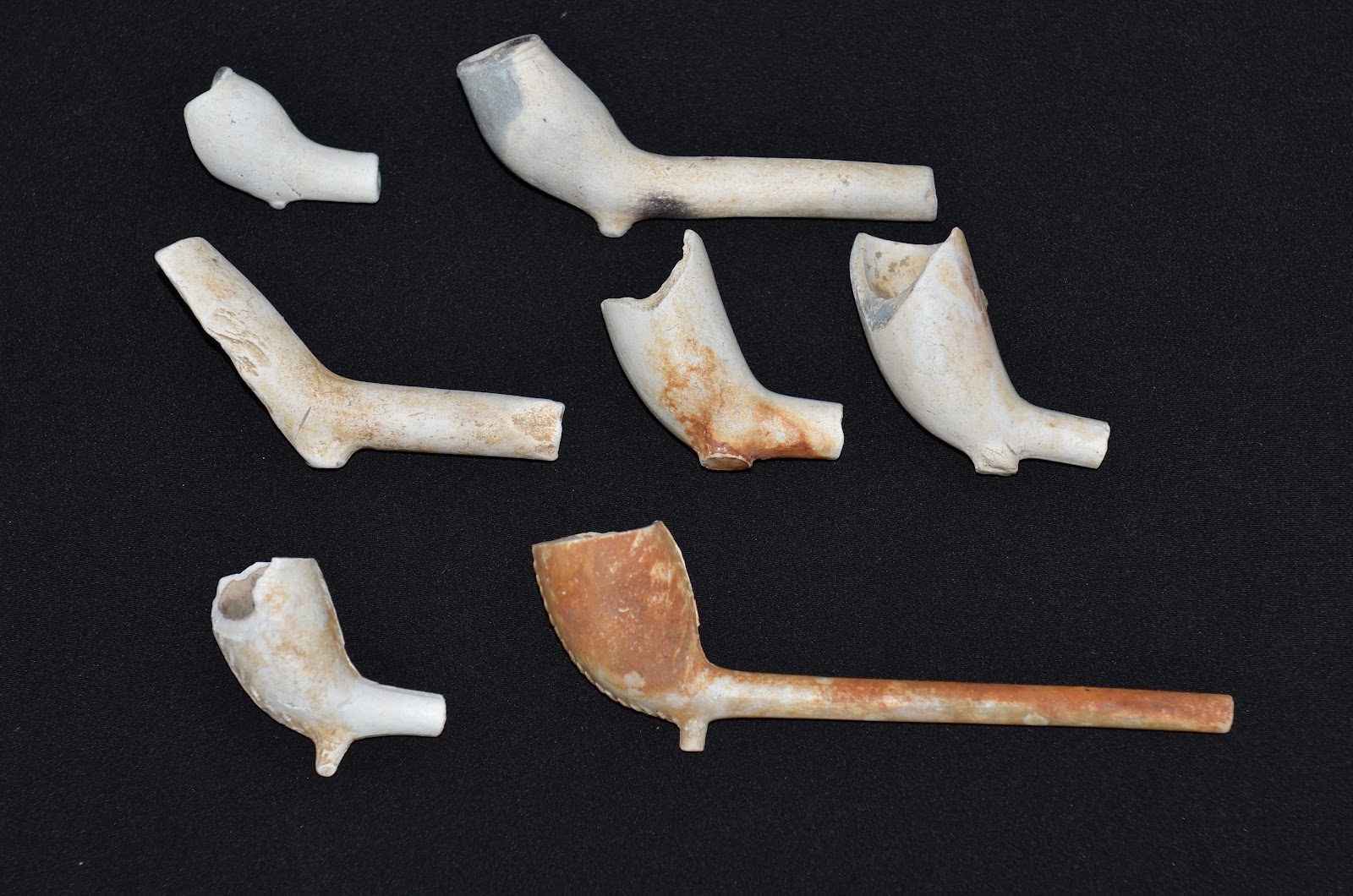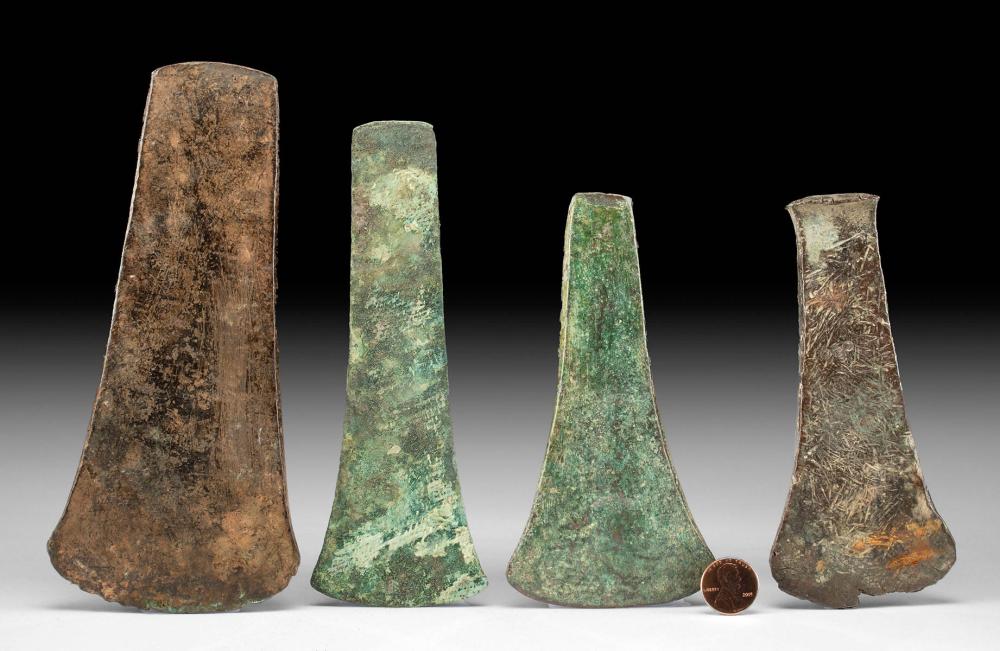Most Indian artifact surface collectors in the Piedmont of the Carolinas and Virginia are familiar with small broken ceramic bowl shards that are common on the numerous Woodland period sites. Many, if not indeed most, of the ceramic vessels that were intentionally buried or casually dropped in garbage pits by the natives some three hundred plus years ago make up this class of fractured pottery. Since much of the Piedmont soil is heavy and dense clay, the myriad of holes that were dug by the prehistoric Indians, for interments or trash, are normally rather shallow. During the last hundred years or so, the modern farmers in this region have deeply plowed the old Indian lands with their large turning plows and while breaking up this compacted soil, they also broke up countless thousands of the ancient vessels. Several hundred years of the natural soil movement of freezing and thawing along with continued agricultural cultivation has reduced these ceramic pot pieces to smaller and smaller sizes. Today, if a person actually has a plowed field on which to artifact hunt, probably many of these smaller than one inch across ceramic shards can be found. This writer has picked up, and occasionally collected, thousands of broken pot pieces and has seen, in other collections, many thousands more. But on extremely rare occasions an intact ceramic vessel can be found in the region. Such is the case with this bowl.

The prehistoric natives, in this region, apparently began making ceramic vessels for eating, food storage and cooking sometime within the last two thousand or so years. Most of the shards encountered as well as most of the very few intact vessels found will date within the last one thousand years. The one element needed by all these ancient people, for life giving sustenance, was water. Therefore, most of the settlements built by the prehistoric natives were developed near water sources – many near Piedmont rivers. The water was, of course, needed for drinking and bathing and cooking as well as for mixing with the stream side clays to make ceramic pottery. Much of this pottery was in the form of simple conical shaped bowls and jars with sizes ranging from a few inches across and high to large corn storage urns topping three feet tall. The insides of these vessels were normally rubbed smooth with river rocks while the exterior walls were well polished, were brushed with vegetation, or were impressed with woven nets or carved wooden paddles. The bases were either flattened or in a somewhat acute conical shape. The rims were in straight alignment with the vessel sides or incurved or outwardly arched and the sides were normally topped with a simple smooth edge. These pots were plainly utilitarian for the most part but some few had unusual elements added such as animal effigies, color added to the ceramics or altered rims. Most of the altered rim borders fit into the class that is called “piecrust rim” where the rim edge was thickened and then tally marked or punctated with a fingernail or a small chipped knife so as to resemble a modern pie crust. One, though, is in a class completely by itself – this saw tooth rim.
Many years ago, a local teenager along with his uncle, found an intact ceramic bowl adjacent to the Dan River in Stokes County, NC. This was near an old village site that today is called Early Upper Sauratown Site and that dates to an occupation by the natives of about AD 1400-1500. This is a rare vessel simply because it is solid or intact. As mentioned before, this writer has found and viewed many thousands of pottery shards from the region but the number of unbroken vessels ever known of or seen would probably be fewer than one hundred. This particular bowl is 5 ¾” high by 7 1/16” in diameter at the everted rim and has a slightly rounded conical base. The exterior is characteristically mottled dark grey/brown and tan with lots of sparkly crushed quartz tempering medium showing on the surface. The interior, as is typical, is burnished smooth and the outside face is stamped with what is known as the Dan River Net Impressed pottery technique. Several places on the exterior clearly show impressions of the weaving knots in the ancient net that was used to press this motif into the green or unfired clay. What a beautiful and symmetrical vessel. And now comes the kicker for this already unique urn! Encircling the entire rim edge are fourteen raised ceramic teeth or barbs that appear to be similarly shaped to the teeth on a modern saw blade. But five to six hundred years ago, there were no saw blades to be seen by these Indians since the Europeans (with their metal saws) had not yet appeared in the Piedmont. What was the ancient ceramist attempting to show with this unique bowl rim? What was the inspiration for this phenomenon? Maybe the edge of a plant leaf could have inspired the potter to create this unusual look to the bowl rim. Or maybe the spines of a porcupine. Or the ruffled feathers of a bird. And of course, it is possible that some village member found a more ancient serrated spear point while digging in the cornfield and it influenced the potter’s actions. It could have been one of many items that stimulated the bowl’s manufacture but it certainly appears to be a saw blade edge. A very perplexing vessel border. Of the maybe one hundred solid Piedmont vessels in existence, this is perhaps the only one with this type rim. It is certainly the only one ever heard of or seen by this writer. This rare and wonderful saw tooth rim bowl.
REFERENCES:
Coe, Joffre L. & Ernest Lewis 1952
“Prehistoric Pottery of the Eastern united States”, ARCHAEOLOGY OF
EASTERN NORTH AMERICA
Coe, Joffre L. 1964
“The Formative Cultures of the Carolina Piedmont”, TRANSACTIONS OF THE
AMERICAN PHILOSOPHICAL SOCIETY
Hudson, Charles M. 1976
THE SOUTHEASTERN INDIANS
Mathis, Mark A. & Jeffery J. Crow 1983
THE PREHISTORY OF NORTH CAROLINA
Rights, Douglas L. 1947
THE AMERICAN INDIAN IN NORTH CAROLINA
South, Stanley A. 1980
INDIANS IN NORTH CAROLINA
Ward, H. Trawick & R. P. Stephen Davis, Jr. 1993
INDIAN COMMUNITIES OF THE NORTH CAROLINA PIEDMONT –
AD 1000-1700
Ward, H. Trawick & R. P. Stephen Davis, Jr. 1999
THE TIME BEFORE HISTORY: THE ARCHAEOLOGY OF NORTH
CAROLINA
Wetmore, Ruth Y. 1975
FIRST ON THE LAND: THE NORTH CAROLINA INDIANS





